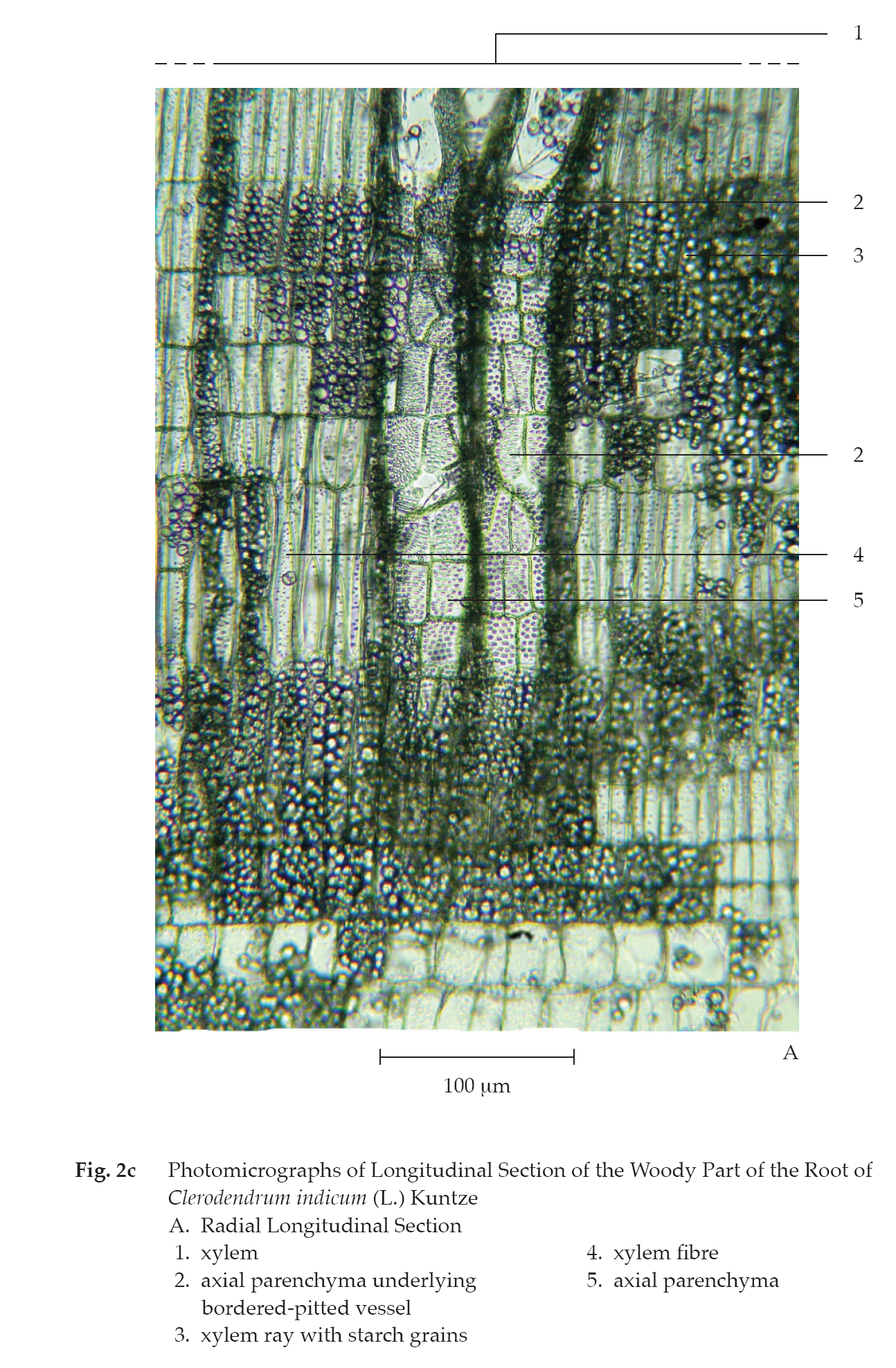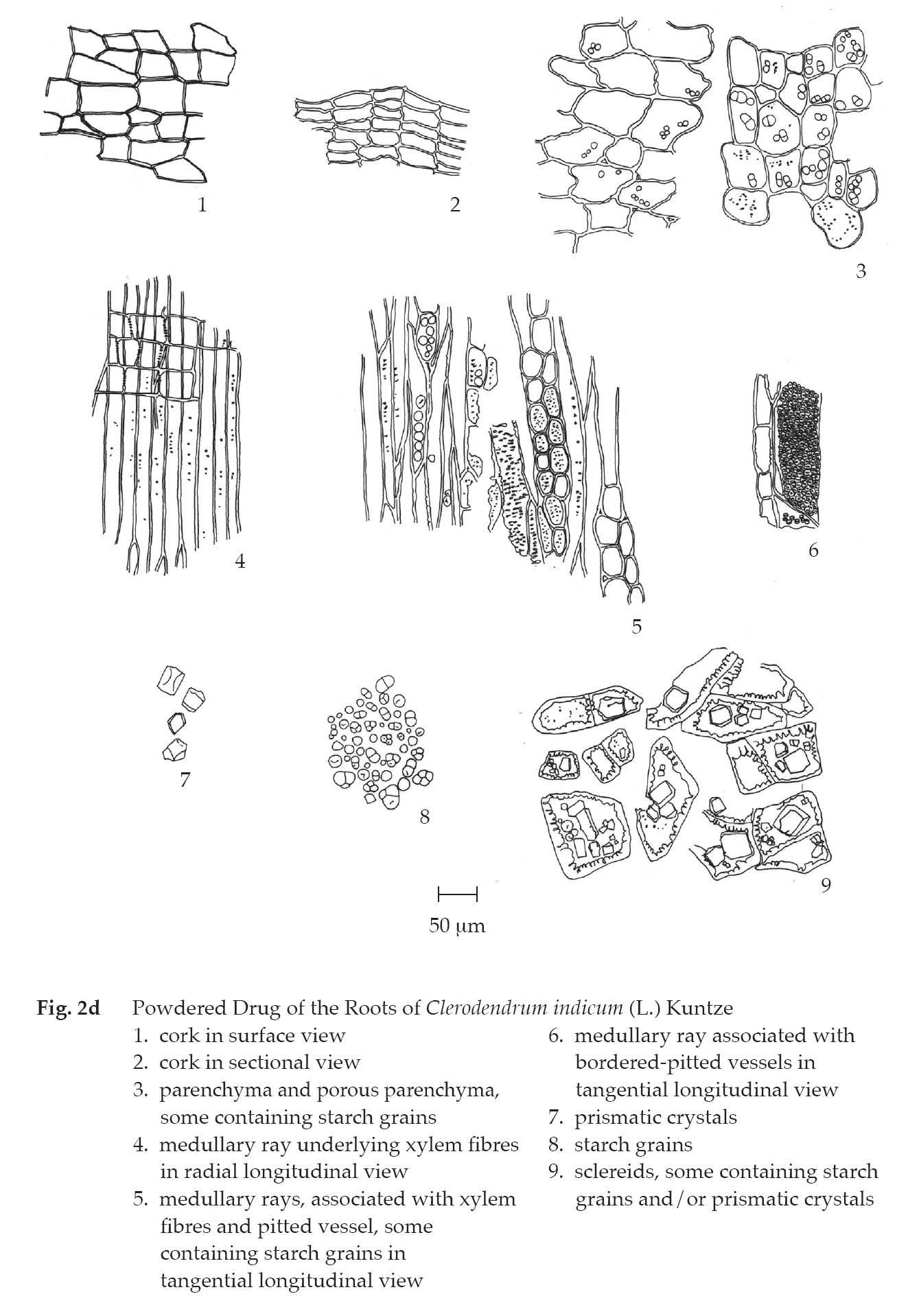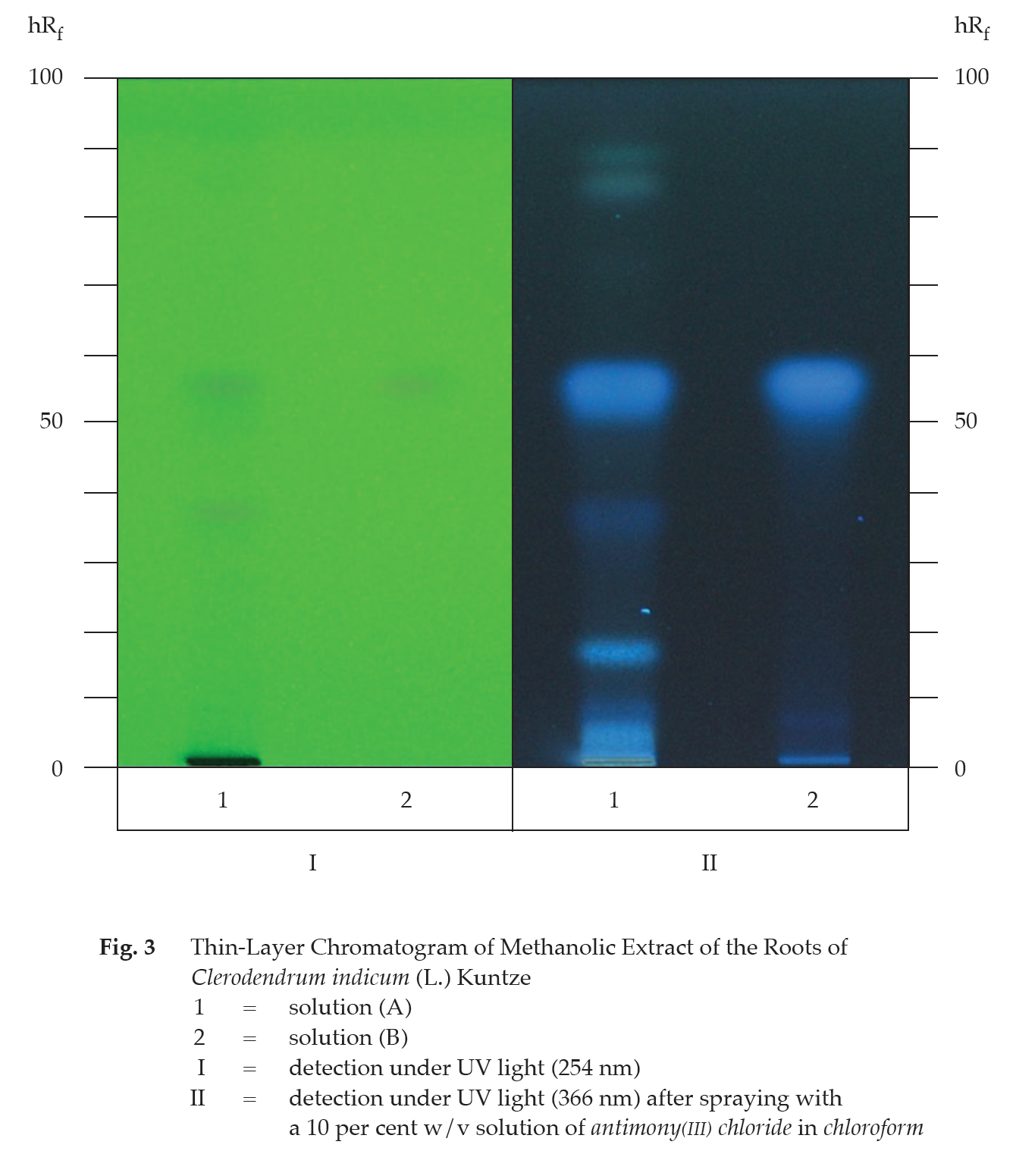ตำรามาตรฐานยาสมุนไพรไทย
Thai Herbal Pharmacopoeia
สำนักยาและวัตถุเสพติด กรมวิทยาศาสตร์การแพทย์ กระทรวงสาธารณสุข
Bureau of Drug and Narcotic, Department of Medical Sciences, Ministry of Public Health(Tinospora crispa (L.) Hook.f. & Thomson)
(Nelumbo nucifera Gaertn.)
(Centella asiatica (L.) Urb.)
(Centella Dry Extract)
(Centella Cream)
(Mesua ferrea L.)
(Piper sarmentosum Roxb.)
(Piper sarmentosum Roxb.)
(Pterocarpus santalinus L. f.)
(Santalum album L.)
(Senna tora (L.) Roxb.)
(Senna alata (L.) Roxb.)
(Senna Alata Tea)
(Piper retrofractum Vahl)
(Myristica fragrans Houtt)
(Andrographis paniculata (Burm. f.) Nees)
(Andrographis Capsules)
(Allium ascalonicum L.)
(Ocimum tenuiflorum L.)
(Curcuma longa L.)
(Turmeric Capsules)
(Turmeric Dry Extract)
(Turmeric Dry Extract Capsules)
(Arcangelisia flava (L.) Merr.)
(Curcuma sp.)
Harrisonia perforata (Blanco) Merr.
(Aristolochia pierrei Lecomte)
(Zingiber officinale Roscoe)
(Ginger Capsules)
(Ginger Tea)
(Cassia fistula L.)
(Nardostachys jatamansi (D. Don) DC.)
(Angelica sinensis (Oliv.) Diels)
Artemisia annua L.
(Ligusticum sinense Oliv. cv. Chuanxiong)
(Neopicrorhiza scrophulariiflora Pennell)
(Atractylodes lancea (Thunb.) DC.)
(Aucklandia lappa Decne)
(Terminalia chebula Retz.)
(Angelica dahurica (Hoffm.) Benth. & Hook. f. ex Franch. & Sav. var. dahurica)
(Kaempferia parviflora Wall. ex Baker)
(Hibiscus sabdariffa L.)
(Roselle Tea)
(Allium sativum L.)
(Zingiber zerumbet (L.) Sm.)
(Wurfbainia testacea (Ridl.) Škorničk.& A. D. Poulsen)
(Cannabis sativa L.)
(Myristica fragrans Houtt)
(Dracaena cochinchinensis (Lour.) S. C. Chen)
(Ficus racemosa L.)
(Hyptis suaveolens (L.) Poit.)
Clerodendrum indicum (L.) Kuntze
(Phyllanthus emblica L.)
(Citrus hystrix DC.)
(Citrus hystrix DC.)
(Areca catechu L.)
(Momordica charantia L.)
Moringa oleifera Lam.
(Aegle marmelos (L.) Corrêa)
(Solanum trilobatum L.)
(Morus alba L.)
Gynostemma pentaphyllum(Thunb.)
Makino
(Clinacanthus nutans (Burm. f.) Lindau)
(Cissus quadrangularis L.)
(Mimusops elengi L.)
(Zingiber montanum (J. König) Link. ex A. Dietr.)
(Piper betle L.)
(Capsicum annuum L.)
(Capsicum Oleoresin)
(Capsicum Gel)
(Piper nigrum L.)
(Piper nigrum L.)
(Eurycoma longifolia Jack)
(Thunbergia laurifolia Lindl.)
(Piper wallichii (Miq.) Hand.-Mazz.)
Senna garrettiana (Craib) H. S. Irwin & Barneby
(Terminalia bellirica (Gaertn.) Roxb.)
(Terminalia chebula Retz.)
(Caesalpinia bonduc (L.) H. Roxb.)
(Tarlmounia elliptica (DC.) H. Rob., S. C. Keeley, Skvaria & R. Chan)
(Hog Creeper Vine Dry Extract Capsiles)
(Hog Creeper Vine Dry Extract)
(Brachypterum scandens (Roxb.) Miq.)
(Lepidium sativum L.)
(Nigella sativa L.)
(Cuminum cyminum L.)
(Foeniculum vulgare Mill.)
(Plantago ovata Forssk.)
(Pimpinella anisum L.)
(Carum carvi L.)
(Anethum graveolens L.)
(Trachyspermum ammi (L.) Sprague)
Albizia procera (Roxb.) Benth.
(Acorus calamus L.)
(Tiliacora triandra (Colebr.) Diels)
Cyanthillium cinereum (L.) H. Rob.
(Orthosiphon aristatus (Blume) Miq.)
Murdannia loriformis (Hassk.) R. S. Rao & Kammathy
(Capparis micracantha DC.)
(Chrysopogon zizanioides (L.) Roberty)
(Cyperus rotundus L.)
(Cannabis sativa L.)
(Syzygium aromaticum (L.) Merr. & L. M. Perry)
(Boesenbergia rotunda (L.) Mansf.)
(Acanthus ebracteatus Vahl)
(Acanthus ilicifolius L.)
(Kaempferia galanga L.)
(Curcuma comosa Roxb.)
Betula alnoides Buch.-Ham. ex D. Don
Cannabis sativa L.
Carthamus tinctorius L
Mitragyna speciosa (Korth.) Havil
Mallotus repandus (Rottler) Müll. Arg
Azadirachta indica A. Juss. var. siamensis Valeton
Azadirachta indica A. Juss. var. siamensis Valeton
Punica granatum L.
Rhinacanthus nasutus (L.) Kurz
Baliospermum solanifolium (Burm.) Suresh
Curcuma aeruginosa Roxb
Boesenbergia kingii Mood & L. M. Prince
Senegalia rugata (Lam.) Britton & Rose
Acacia concinna (Willd.) DC.
Senegalia rugata (Lam.) Britton & Rose
Acacia concinna (Willd.) DC.
Senna alexandriana Mill. var. alexandriana
Cassia acutifolia Delile, Cassia angustifolia Vahl
Butea superba Roxb. ex Willd.
[Plaso superba (Roxb. ex Willd.) Kuntze, Rudolphia superba (Roxb. ex Willd.) Poir.
Pueraria candollei Graham
ex Benth. var. mirifica (Airy Shaw & Suvat.) Niyomdham
Streblus asper Lour.
Suregada multiflora (A. Juss.) Baill. (Gelonium
multiflorum A. Juss.
Clerodendrum Indicum Root is the dried root of Clerodendrum indicum (L.) Kuntze (Family Labiatae), Herbarium Specimen Number: DMSC 5243, Crude Drug Number: DMSc 1078.
Constituents Clerodendrum Indicum Root contains flavonoids (e.g., pectolinarigenin, hispidulin). It also contains triterpenoids, sterols, etc.
Description of the plant (Figs. 1a, 1b) Subshrub to shrub 1 to 2 m tall; suffrutescent or herbaceous, stoloniferous; stem usually erect, sometimes bent, mostly unbranched, hollowed; branchlets purple to purplish, channelled, smooth. Leaves simple, whorled with 3 to 5 per node or opposite, decussate; leaf blade narrowly lanceolate to oblong-lanceolate, 10 to 21 cm long, 1.3 to 2.5 cm wide, apex short acuminate, base attenuate, margin entire or sinuate, membranous, glabrous; midrib prominent, lateral veins 10 to 12 pairs; sessile or petiolate, petiole up to 8 mm long, with nodal hairs at petiole base. Inflorescence terminal leafy thyrse, 20 to 45 cm long, 10 to 15 cm wide; cyme red, few flowered; peduncle up to 3 cm; bract linear-lanceolate to lanceolate, 1 to 2 cm; bracteole awl-shaped. Flower: calyx 1 to 1.5 cm long, divided 3/4 to base, densely minute round glandular, lobes 5, ovate-lanceolate, 0.8 to 1.5 cm long, 3 to 6 mm wide, apex acute; corolla white, becoming cream-coloured, tube funnelform, curved, 5 to 9 cm, lobes 5, spreading, lanceolate, elliptic or ovate-oblong, 0.8 to 1.5 cm long, 3 to 6 mm wide, apex obtuse; stamens 4, free, long exserted, reddish towards the end; ovary superior, glabrous, 2-loculed; ovules 2 in each locule, style 9.5 to 15 cm long, longer than stamens, stigma 2-branched, 0.3 to 1.5 cm long. Fruit drupe, subglobose to globose, 0.7 to 1.2 cm in diameter, 1- to 4-lobed, dark blue, black when ripe; surrounded at base by accrescent leathery red calyx, up to 3.8 cm in diameter. Seed 1 per locule.
Description Odour, slightly woody; tasteless.
Macroscopical (Fig. 1a) Cut roots, irregularly cylindrical, varied in length and size; bark thin, brownish to dark brown; wood pale yellow.
Microscopical (Figs. 2a, 2b, 2c, 2d) Transverse section of the root shows periderm, cortex, vascular tissue, and primary xylem tissue. Periderm, several layers of rectangular cork cells. Cortex: sclereids and polygonal parenchyma, some of which contain starch grains. Vascular tissue: phloem, porous parenchyma, some containing starch grains, and phloem ray cells; xylem vessels: fibres, axial porous parenchyma, some containing starch grains, and xylem ray cells, some of which contain starch grains. Primary xylem tissue: small cells in the centre. Radial and tangential longitudinal sections of the root illustrate periderm, cortex, phloem, and xylem with bordered-pitted vessels. Clerodendrum Indicum Root in powder possesses the diagnostic microscopical characters of the unground drug. Starch grains, mainly compound, porous parenchyma, uniseriate and multiseriate ray cells in tangential longitudinal view can be seen in abundance.







Additional information The adulteration of clerodendrum indicum root with stems, branches, etc. may be found.
Packaging and storage Clerodendrum Indicum Root shall be kept in well-closed containers, protected from light, and stored in a dry place.
Identification
A. Macerate 500 mg of the sample, in powder, with 4 mL of ethanol for 10 minutes and filter. To 2 mL of the filtrate, add 2 to 3 pieces of magnesium ribbon and a few drops of hydrochloric acid and mix: a yellow-orange colour develops.
B. Carry out the test as described in the “Thin-Layer Chromatography” (Appendix 3.1), using silica gel GF254 as the coating substance and a mixture of 75 volumes of n-hexane, 25 volumes of ethyl acetate and 2 volumes of formic acid as the mobile phase and allowing the solvent front to ascend 8 cm above the line of application. Apply separately to the plate as bands of 8 mm, 5 μL of solution (A) and 1 μL of solution (B). Prepare solution (A) by refluxing 2 g of the sample, in fine powder, with 20 mL of methanol for 30 minutes, filtering and evaporating the filtrate under reduced pressure to dryness. Dissolve the residue in 2 mL of methanol. For solution (B), dissolve 1 mg of pectolinarigenin in 2 mL of methanol. After removal of the plate, allow it to dry in air and examine under ultraviolet light (254 nm), marking the quenching bands. The chromatogram obtained from solution (A) shows a quenching band (hRf value 51 to 59) corresponding to the pectolinarigenin band from solution (B). Spray the plate with a 10 per cent w/v solution of antimony(III) chloride in chloroform, heat at 105° for 5 minutes and immediately examine the plate under ultraviolet light (366 nm); the band due to pectolinarigenin is blue. Several other bands of different colours are also observed (Table 1); see also Fig. 3.
Table 1 hRf Values of Components in Methanolic Extract of the Roots of Clerodendrum indicum (L.) Kuntze
| Band | hRf Value | Detection | |
| UV 254 | 10 Per Cent W/V Solution of Antimony(III) Chloride in Chloroform and UV366 |
||
| 1 2 3 4* 5 6 |
6-9 15-18 34-37 51-59 83-86 88-91 |
- - quenching quenching - - |
blue blue light blue blue light yellow light yellow |
*pectolinarigenin
Loss on drying Not more than 9.0 per cent w/w after drying at 105° to constant weight (Appendix 4.15).
Foreign matter Not more than 2.0 per cent w/w (Appendix 7.2).
Acid-insoluble ash Not more than 1.0 per cent w/w (Appendix 7.6).
Total ash Not more than 5.0 per cent w/w (Appendix 7.7).
Ethanol-soluble extractive Not less than 1.5 per cent w/w (Appendix 7.12).
Water-soluble extractive Not less than 4.0 per cent w/w (Appendix 7.12).
